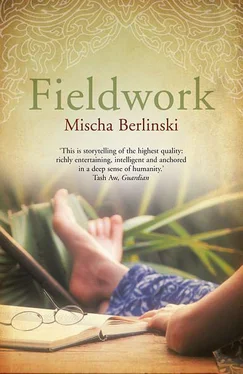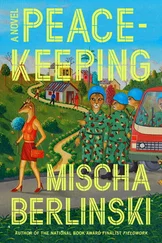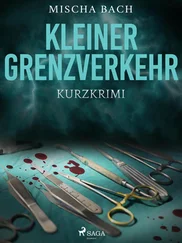There is in this something that confirms common sense: no liberation of the spirit should come easy.
The Curiosity saved him. Malinowski, however much he may have disliked island life, spent the better part of five years living with the Tro
*After the publication of the diaries, students of the history of anthropology returned to Kiriwina and asked elderly natives to recall Malinowski. In stark contrast to the self-portrait offered up by the diaries, Malinowski seems to have been a beloved figure among the villagers: endlessly inquisitive, charming, patient, willing to talk with anyone about anything for hours. Only his intelligence was put in doubt: the man barely knew which end of the tuber to put in the ground.
briand Islanders because the Curiosity had seized him. He had noticed a Very Strange Thing — and if he wished to understand it, there were no books of which he could avail himself, no authorities to consult. The only way to satisfy the Curiosity and understand the Very Strange Thing was to stay on the island and ask more questions. The literature of anthropology is absolutely thick with such stories: the exotic location, the deep boredom, the malarial fever, the muffled cry—"As God is my witness, I will get off of this rock!" — then some small element in the local culture that quickens the pulse. The unpleasantness of the local life is forgotten or ignored as the Curiosity takes hold; a hitherto-unknown hot monomania bubbles and steams in the anthropologist's previously tepid soul.
The Very Strange Thing that Malinowski noticed was a practice called kula . It is a captivatingly simple idea. For the inhabitants of the village in which he was ensconced, Malinowski noticed, far and away the most beloved of a man's possessions were his necklaces and armbands; indeed, so valuable were a man's necklaces and armbands that they were never, ever, worn, the armbands in any case being too small even for a child. Whatever the appeal of the necklaces and armbands, it was certainly not to Malinowski's eyes an aesthetic attraction: they were brutish-looking handmade things, bits of shells strung on a rope. In his book, he published pictures of the necklaces and armbands: they are the sort of things that David Walker might well have found on sale outside a Grateful Dead show, handmade by a girl named Moonbeam.
But how the Trobrianders loved their necklaces and armbands! They gloried over them for hours, and told stories of their illustrious lineage, how they had come to possess them and who had possessed them before; the necklaces and armbands were comforts in times of sorrow and additional reasons to take pleasure in life in times of abundance. A dying man would ask to be presented with his necklaces and armbands as proof that all the aching and struggle had been worthwhile; when a Trobriand Islander in a philosophical moment thought of the things that really, really mattered — not just the day-to-day grind of fishing and gardening and canoe-making, not just the frivolity of feasting or lovemaking — but when he took stock of the things that counted , one of the things he would surely think of were his necklaces and armbands.
Then he would give them away.
It was all very perplexing to Malinowski. It was the strangest thing that he had encountered in his entire life. It made him curious. One day, a villager would boast that his necklaces and armbands were the finest in all the Trobriand Islands; the next day, he would prepare his long outrigger canoe and head off into the pounding surf. The Trobriand Islands are roughly arranged in the shape of a doughnut, and distances between islands are considerable; voyages by canoe between islands were long and hazardous, and certainly uncomfortable. Yet not to go was unthinkable. A man and his kin would paddle off in their long canoe, sailing for days under an unflinching equatorial sun to arrive at some village on some other island along the perimeter of the doughnut, where the man from Malinowski's village would find one of his long-standing partners in kula and present him with a necklace or armband. If the direction of travel was counterclockwise, the man got an armband; if clockwise, a necklace. What's more, although it breaks a man's heart to give away his favorite necklace or armband, he must do it with high style — disdainfully, haughtily, as if such a treasure were no more than a trinket. The conch is blown. There is a feast. And then the man returns home. Sometime in the future — never right away — the gift is repaid. The men from the faraway village on the faraway island arrive in Kiriwina, and if they originally received an armband, they now present an equally fantastic necklace; if they received a necklace, they present an armband. The conch is blown. There is a feast. In this way, necklaces and armbands forever circulate in opposite directions around the circle of the Trobriand Islands, pausing for a time in this village or that, then moving along.
The Curiosity took Malinowski. Only necklaces could be exchanged for armbands, and nothing else. They were not money. To possess a beautiful necklace or armband conferred status upon a man, but only for as long as it was in his possession. The Curiosity would not let Malinowski go. How did the villagers see these necklaces and bracelets? Why did they risk their lives on these long voyages only to give away what they so treasured?
To understand kula , Malinowski spent almost five years on those islands off the coast of New Guinea. Judging from his diaries, the intensity of his dislike for island living never abated; but, then, neither did the Curiosity. Malinowski's final analysis of kula is the magisterial Argonauts of the Western Pacific , and it is a sad book. His analysis runs to some five hundred pages, and covers in depth everything from the appropriate hand gestures with which the necklaces and armbands are offered to the magic spells required to avoid the Flying Rocks of the open sea. But, oddly, and to my great frustration, the simple question — why? why do they do it? — remains unanswered. Suppositions have been offered elsewhere in the anthropological literature. But one has the sensation on finishing Argonauts that Malinowski had come to see the kula as so normal an activity that, although it certainly merited describing, it no longer needed explaining. For the reader alone, the Curiosity remains.
Now one more digression tacked on to this already digressive path.
In the final chapter of Argonauts of the Western Pacific , entitled "The Meaning of the Kula," Malinowski, although he could not explain the kula , nevertheless argued that the kula is not a novel form of human activity, and that in the fullness of ethnographic time, it will not prove unique to the Trobriand Islands. Ethnographers will find that other societies also practice the kula , or at least things very much like the kula . He wrote: "And we may be on the lookout for economic transactions, expressing a reverential, almost worshipping attitude towards the valuables exchanged or handled; implying a novel type of ownership, temporary, intermittent, and cumulative; involving a vast and complex social mechanism and system of economic enterprises by which it is carried out."
We need not look far. My stepfather is a gastroenterologist by day but by night a passionate collector of rare and first editions of books concerned with polar exploration and the nautical exploration of the Pacific Northwest. My stepfather devotes enormous time and energy to his collection, and invests substantial sums of money in it. I will provoke no family quarrels by saying that when my stepfather reflects on the things in his life that give him real pleasure and satisfaction, those gilt-edged, leather-bound volumes are not very far down on his list. In his library there are editions so precious they cannot be touched or read; such books often have a surrogate reading edition, a perfect facsimile of the original, but are worth substantially less. There are books valuable precisely because the pages have never been cut and therefore cannot be read ( "a reverential, almost worshipping attitude towards the valuables exchanged or handled" ). He has Shackleton's memoirs, and George Vancouver's, and a first edition of Apsley Cherry-Garrard's The Worst Journey in the World , signed by Apsley Cherry-Garrard himself. My stepfather is a member of a community of equally committed collectors of rare books devoted to polar exploration and the nautical exploration of the Pacific Northwest (as it happens, two distinct but overlapping sets) whose members trade letters and e-mails and phone calls. They travel great distances to meet with one another and discuss and exchange rare books ( "involving a vast and complex social mechanism and system of economic enterprises by which it is carried out" ). It is something of a closed circle, this little world, and books pass from one collector's hands to the next. A collector will buy a book, hold on to it, sell it to another collector, and then, much later, buy it again ( "a novel type of ownership, temporary, intermittent, and cumulative" ).
Читать дальше












